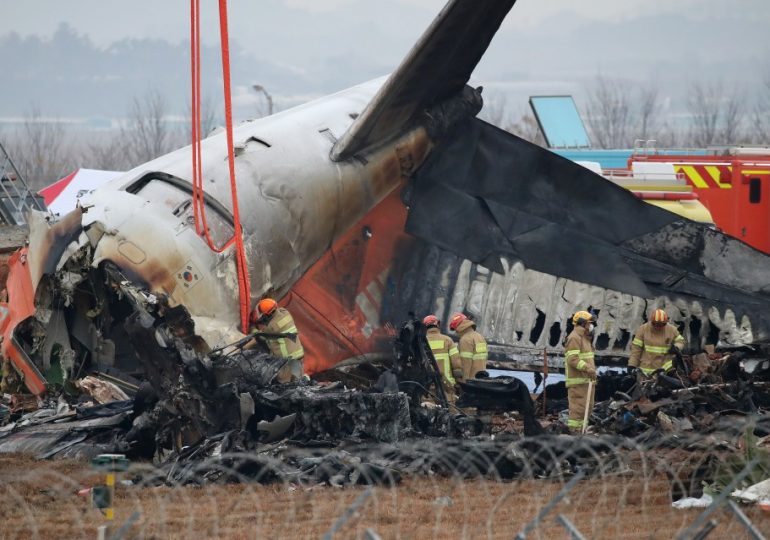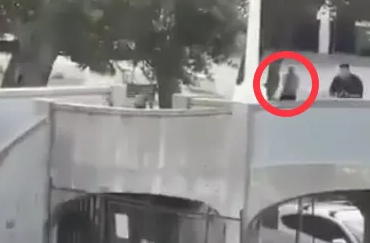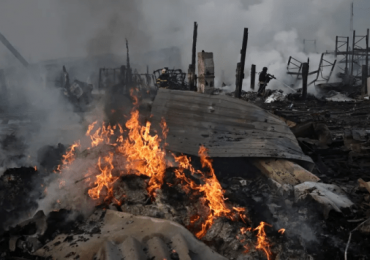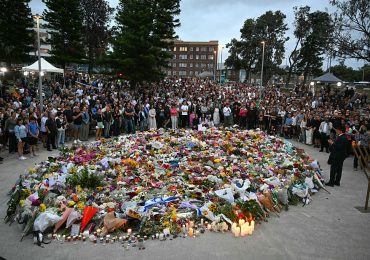A SHOCKING twist has been reported in the case of the Jeju Air crash as South Korea’s ministry says the aircraft’s black box stopped minutes before the disaster.
The crash at Muan International Airport that killed 179 people on December 29 saw the airliner land on its belly and career off the runway before hitting a wall and turning into a fireball.
GettyOfficials have announced an update in the investigation into the Jeju Air crash in South Korea on December 29[/caption]
AFPTwo black boxes located on board the aircraft have data missing from the crucial minutes before the crash[/caption]
AFPThe passenger plane skidded along the runway without landing gear, smashed into a wall and burst into flames[/caption]
As authorities investigate the worst airline disaster on South Korean soil, the transport ministry revealed that flight data and cockpit voice recorders stopped processing data four minutes before the crash.
The ministry is now investigating how the aircraft’s black boxes, which are designed to be almost indestructible, stopped working.
Black boxes are usually found at the back of the aircraft near the tail, which is usually the least damaged part in a crash.
They are designed to withstand extreme temperatures, high-speed impact, and submersion underwater to help investigators retrieve crucial flight data.
This includes speed, altitude, engine noise, radio transmissions and voice recordings from the cockpit.
However, they are not entirely fail-safe and can be destroyed.
On the Jeju Air flight, there were two separate black boxes, one recording data regarding the aircraft itself and the other recording the pilots in the cockpit – both stopped working.
The transport ministry said on Saturday that when missing data was discovered, officials sent the damaged devices to the US National Transportation Safety Board laboratory for further analysis.
What is known about the incident is that in the four minutes before the crash, pilots onboard the doomed aircraft reported a bird strike to air traffic control.
They then declared an emergency and abandoned a landing attempt to try another manoeuvre.
The Boeing 737-800 then did a sharp turn and travelled towards the airport’s runway from the other end before crash-landing without the landing gear deployed.
As well as the missing data, concerns have been raised among investigators about the embankment that the aircraft smashed into before turning into a fireball.
The embankment was designed to support the “localiser” system that helps aircraft during landing but investigators are looking into why it was built so near the end of the runway and out of such hard material.
Bosses of the South Korean airline allegedly knew that the concrete wall it smashed into was too close to the runway.
According to Sim Jai-dong, an ex-accident investigator for the transport ministry in South Korea, the fact that data is missing from the key moments before the crash is extremely surprising.
He believes this could indicate that the aircraft lost all power including backup which he acknowledged is incredibly rare.
Aviation expert Frank E Turney, the chair of the aviation department for Capitol Technology University in the US told The Guardian that the flight data from black boxes are “usually a fairly sizeable piece of the puzzle that [investigators] use to determine the accident.”
But, he explained that “the flight data recorder is not going to sit there and tell you this is what caused this accident.”
He said: “It’s going to give you all of the underlying factual data that you can use to try to assess how the accident occurred.”
“Sometimes the data that you’re getting from the flight data recorder will be very conclusive on what the cause of the accident was, but most of the time it is going to be a piece of the overall investigation, and not necessarily a slam dunk on ‘this is what caused this accident’.”
AFPInvestigators pick through the rubble of the plane[/caption]
AFPPeople pay tribute to the victims of the Jeju Air plane crash during a New Year event in Seoul[/caption]
The transport ministry has reassured families of victims stating that other available data is being used to investigate what happened and that all parts of the investigation will be transparent.
However, some families of victims have spoken out against the ministry investigating the crash, instead calling for an independent party to take the lead.
As officials continue to look into what happened, South Korea has ordered emergency safety inspections across all of its airline operations and on all Boeing 737-800s.
Kim Yi-bae, CEO of the airline, Jeju, told reporters that “Nothing abnormal was noted with the landing gear.”
He added that a standard pre-flight inspection found “no issues” with the passenger plane.
“As for whether the landing gear functioned properly, that is directly related to the accident investigation, and we are not in a position to know at this time,” he told a press conference in Seoul.
The Sun previously reported that aviation expert Professor Ron Batsch believes that something “sinister” may have caused the crash.
Speaking on Australia’s “Today” show, he said it is “pretty unlikely that a birdstrike alone would be sufficient to bring down an aircraft or to foresee landing gear not to be able to be operative.
“So it may have been, and this is only speculation, that there may have been something more sinister on board the aircraft that could have caused it.”
The announcement that both black boxes stopped recording four minutes before the crash only adds another twist to the tragic case.
EPAInvestigators have reassured families of victims that other pieces of data are being analysed as the black boxes are being further investigated in the US[/caption]
APSouth Korean officials have called for emergency safety checks on all Boeing 737-800’s[/caption]
ReutersConcerns have been raised about the embankment and concrete wall at the end of the runway[/caption]
Leave a comment







